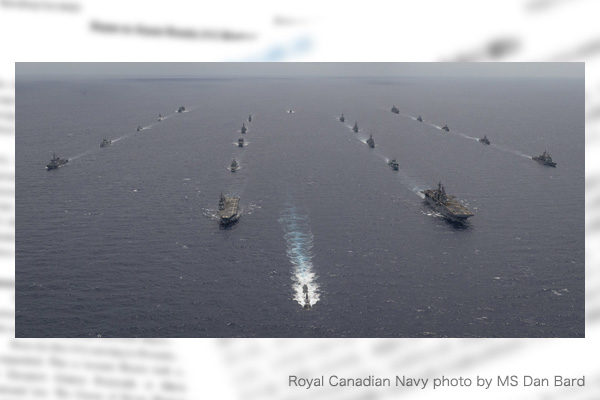On December 27, U.S. President Joe Biden signed the National Defense Authorization Act for fiscal 2022 into law, outlining the year’s defense budget. On December 24, the Japanese cabinet decided on its fiscal 2022 budget. I would like to discuss key points of the Japanese and U.S. defense budgets from the viewpoint of deterrence against China.
RIMPAC could lead to Japan-Taiwan military exchange
The U.S. National Defense Authorization Act recommends the Biden administration to invite Taiwan to participate in Exercise Rim of the Pacific (RIMPAC) 2022.
The Japanese Self-Defense Forces have been unable to interact with Taiwanese forces under diplomatic constraints. If the JSDF and Taiwanese forces participate in the multilateral military exercise, however, they can directly interact with each other as a result. If the U.S. Navy provides the Taiwanese Navy with data link crypto for real-time sharing of information, the Japanese Maritime SDF and the Taiwanese Navy will be able to share tactical pictures. This is of great significance.
The JMSDF took part in the RIMPAC for the first time in 1980. Earlier, the JSDF had not been allowed to interact with foreign militaries other than U.S. forces. Japan’s participation in the RIMPAC paved the way for multilateral military exchange, leading eventually to the approval of the exercise of collective self-defense right. The Taiwanese Navy’s participation in the RIMPAC 2022 would provide a breakthrough for Japan-Taiwan military exchange.
JSDF-developed cruise missiles
Regarding Japan’s fiscal 2022 defense budget, I pay attention to a plan to enhance the performance of the Type 12 surface-to-ship missile. Though the Defense Ministry’s official release falls short of specifying how the performance would be enhanced, media reports say the ministry intends to extend the missile’s range from about 200 kilometers at present to 900 kilometers first, then to 1,500 kilometers eventually. The missile, which is now to be launched only from the ground, will also become able to be launched from war ships including submarines and from aircraft.
Moreover, 1.4-billion-yen development expenditure for prototype of a new anti-ship guided missile was included in the budget. The missile has a reported range of about 2,000 kilometers, being dubbed as a Japanese Tomahawk cruise missile. As far as target detection capability is concerned, the Japanese missile could functionally attack the invading units of People's Liberation Army (PLA) Navy detected by Taiwanese naval combatants, if the Taiwanese Navy’s participation in the RIMPAC paves the way for real-time information sharing between Taiwan and Japan.
The U.S. defense authorization act more than tripled the funding for the Pacific Deterrence Initiative (PDI) for strengthening the Indo-Pacific forces to some $7.1 billion for an apparent plan to deploy ground-launched intermediate-range missiles (with ranges between 500 and 5,500 kilometers) on the first island chain along Japan, Taiwan and the Philippines and on the second island chain including Guam Island.
The SDF’s extension of missile ranges and the new deployment of U.S. missiles under the PDI would dramatically improve deterrence against China. The problem is whether the Fumio Kishida administration would decide to accept U.S. ground-launched intermediate-range missiles in Japan.
Fumio Ota is a councilor and a Planning Committee member at the Japan Institute for National Fundamentals. He is a retired Vice Admiral of Japan’s Maritime Self-Defense Force.


